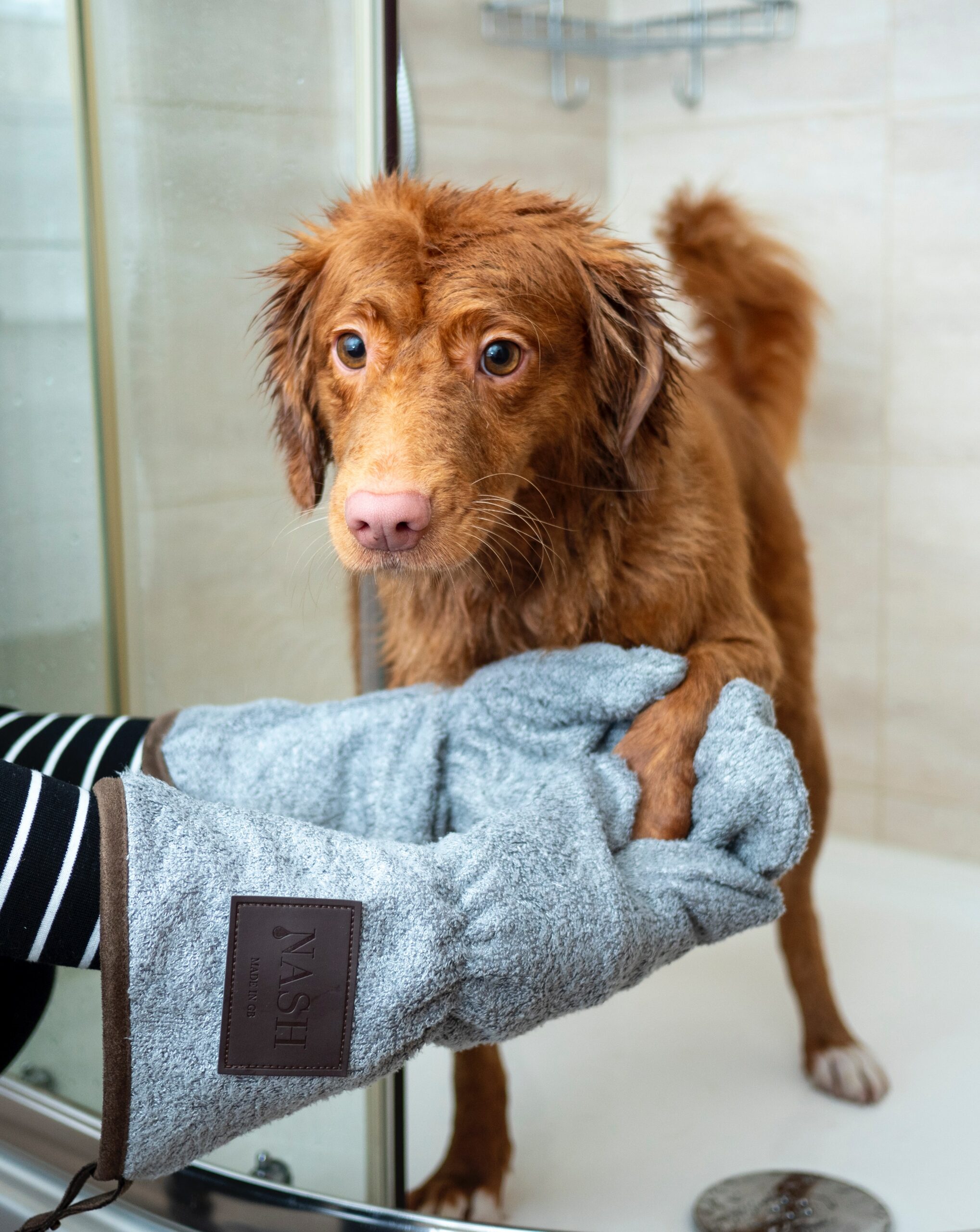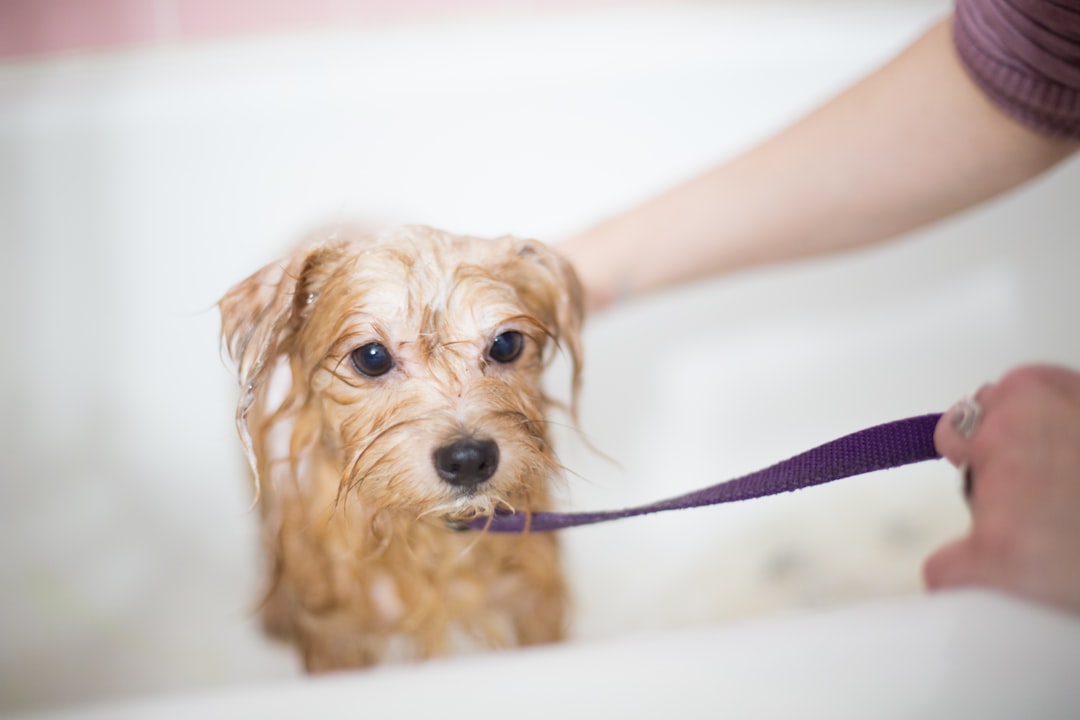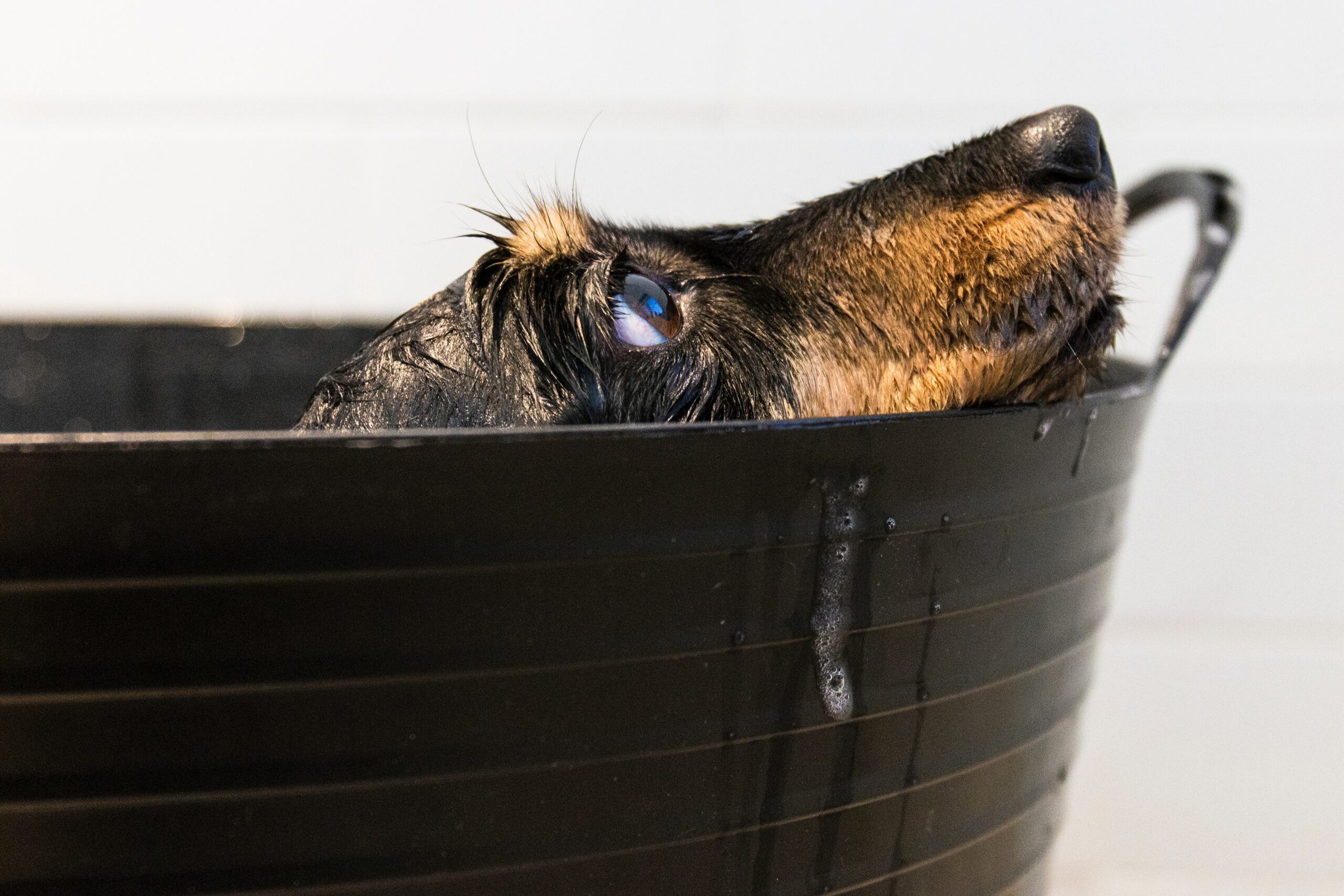- You are here:
- Home »
- Blog »
- Boston Dog Trainer »
- Grooming Tips: Overcoming Dog Bath Time Anxiety and Resistance
Grooming Tips: Overcoming Dog Bath Time Anxiety and Resistance
Grooming Tips: Overcoming Dog Bath Time Anxiety and Resistance
This article explores strategies for easing dog bath time anxiety and resistance, including creating a calm environment, introducing positive associations, and implementing desensitization techniques.

Understanding Dog Bath Time Challenges
Bathing a dog can be a challenging task, especially when the dog experiences anxiety and resistance towards bath time. This can be attributed to various reasons such as sensory issues, fear of water, and traumatic experiences [1][2]. Dogs, like toddlers, may develop fear of bathing due to their rapid brain growth and new awareness of their surroundings [1]. Sensory issues can intensify the distress experienced by dogs during bath time, making it a challenging experience.
Understanding the root causes of a dog’s bath time challenges is crucial for developing effective strategies to address them. For instance, if a dog exhibits anxiety due to a traumatic bathing experience, it’s essential to approach bath time with empathy and patience, gradually rebuilding trust and positive associations. Similarly, if a dog displays resistance due to sensory issues, creating a calm and soothing environment can significantly alleviate their distress. By recognizing these specific challenges, pet owners can tailor their approach to suit their dog’s individual needs, ultimately leading to a more positive bathing experience for their furry companions.
Additionally, considering the similarities between dogs and children in terms of bath time challenges can provide valuable insights. For instance, just like children, dogs may need a predictable routine and positive associations to overcome anxiety and resistance. By acknowledging these similarities, pet owners can draw from strategies used to help children with bath time fears, such as creating a spa-like environment, using engaging toys, and providing a sense of predictability and control, to effectively address their dog’s bath time challenges [1].
## Strategies for Easing Dog Bath Time Anxiety and Resistance Creating a calm and relaxing bath time environment is crucial for helping dogs overcome anxiety. Ensuring a quiet and distraction-free bathing area, using warm water, and gentle handling can help reduce anxiety [1]. Implementing a predictable routine for bath time provides a sense of control and security for the dog, contributing to a more positive experience. Additionally, introducing gradual exposure and positive associations with bath time, such as using special treats or toys, can help ease resistance. Utilizing tools and products, such as bath visors, washcloths, and engaging toys, can reduce sensory overload and make bath time more comfortable for the dog [1]. These strategies contribute to creating a more soothing and enjoyable bath time experience for dogs.
Training Dogs to Enjoy Bath Time
When it comes to helping your dog enjoy bath time, desensitization and counter-conditioning techniques can play a significant role. These methods involve gradually exposing your dog to different aspects of bath time, such as water and bathing tools, in a controlled and positive manner [1]. For example, if your dog fears the sound of running water, you can start by simply turning the tap on at a low level and pairing it with positive experiences like playtime or treats. Over time, you can gradually increase the intensity of the sound while continuing to associate it with positive reinforcements, helping your dog feel more at ease with the water and the bathing process.
In addition to these techniques, it’s essential to pair the bathing experience with positive reinforcements, such as treats and praise. By doing so, you create a positive association with bath time, encouraging your dog to relax and enjoy the experience. For instance, after a successful bath, rewarding your dog with their favorite treat or engaging in a fun play session can help them associate bathing with positive outcomes, making them more receptive to the process in the future.
Moreover, reinforcing calm behavior during bath time is crucial. This can be achieved by providing physical reassurance and support, which can help your dog feel secure and relaxed throughout the bathing process. For example, using a gentle touch and soothing voice while bathing your dog can help them feel comforted and safe, ultimately contributing to a more positive and enjoyable bath time experience for your furry companion.
Addressing Specific Dog Bath Time Challenges
Addressing sensory issues during bath time requires a thoughtful and tailored approach to create a calming experience for dogs. For instance, sensitive ears should be protected from the sound of running water to minimize discomfort, and the use of engaging toys can provide a positive distraction for dogs with sensory challenges. By carefully adjusting the water temperature to suit the dog’s preferences and finding what works best for them, bath time can become less overwhelming and more enjoyable, ultimately reducing resistance.
When dealing with older dogs that have developed anxiety towards bathing, it’s essential to acknowledge any negative experiences they may have had in the past. For example, if an older dog has experienced a traumatic bathing incident, a patient and understanding approach is necessary to rebuild trust and confidence during bath time. Additionally, older dogs may benefit from gentle bathing techniques, allowing them to acclimate at their own pace to minimize anxiety and resistance [2].
Moreover, for dogs with a fear of water due to past traumatic experiences, a gradual and supportive approach is crucial. By introducing alternative methods such as using washcloths and smaller containers of water, dogs can slowly become more comfortable with the bathing process. Empathy and care are paramount in addressing their fear, ensuring that they feel safe and supported during bath time. Over time, these strategies can help dogs overcome their fear of water and gradually become more at ease with the bathing experience.
Ultimately, by recognizing and addressing these specific challenges, dog owners can provide the necessary support and care to help their dogs feel more comfortable and secure during bath time, fostering a positive and relaxing experience for both the dog and the owner.
Professional Support and Resources
When it comes to helping your dog overcome anxiety and resistance during bath time, it’s important to know that you don’t have to navigate this journey alone. There are numerous resources available to provide additional support and guidance. For instance, there are teen support books and e-courses specifically designed to help dog owners manage anxiety in their pets. These resources can offer valuable insights and practical strategies for creating a positive bath time experience for your dog. They often provide step-by-step guidance, real-life examples, and expert advice to help you understand and address your dog’s specific anxieties and resistance towards bathing.
In addition to these resources, seeking professional advice and support from experts in dog behavior and training can be incredibly beneficial. Professional dog trainers and behaviorists have the knowledge and experience to assess your dog’s individual needs and tailor a plan to help them feel more comfortable and relaxed during bath time. They can provide personalized strategies, practical tips, and ongoing support to address any specific challenges your dog may be facing. By working with professionals, you can gain valuable insights and guidance to create a positive and stress-free bath time routine for your beloved pet.
 Conclusion
Conclusion
In conclusion, it is crucial to understand the reasons behind dog anxiety and resistance during bath time to effectively address these challenges. Sensory issues, fear of water, and traumatic experiences can all contribute to a dog’s anxiety and resistance during bath time. For example, some dogs may have developed a fear of water due to a traumatic bathing experience in the past, while others may have sensory issues that intensify the distress experienced during bath time. By recognizing these specific challenges, dog owners can tailor their approach to make bath time a more positive experience for their pets [1][2].
Implementing strategies such as creating a calm and relaxing bath time environment, providing gradual exposure, and using positive reinforcement techniques are essential for helping dogs overcome their anxiety and resistance. For instance, ensuring a quiet and distraction-free bathing area, using warm water, and establishing a predictable routine can help reduce anxiety. Additionally, introducing special treats or toys to create positive associations with bath time and utilizing tools like bath visors and washcloths can also ease anxiety and resistance during bath time [1][2].
By understanding the specific challenges faced by their dogs and implementing tailored strategies to address them, dog owners can create a positive and relaxing bath time experience. This approach, coupled with empathy and patience, can significantly improve the overall well-being of dogs and strengthen the bond between dogs and their owners.

